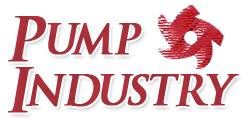Glossary of Pump Terms: L
Labyrinth seal: A labyrinth seal is a type of mechanical seal that guides the sealed fluid through a complex labyrinth-like path, effectively slowing down its leakage by creating multiple barriers and turbulence.
Laminar: Laminar refers to a flow condition in which fluid particles move in parallel layers without mixing. It is characterized by smooth and predictable flow patterns.
Lantern ring: A lantern ring is a perforated ring positioned in the middle of a packing ring set. It serves the purpose of supplying lubricant or a barrier fluid to the packing, ensuring proper lubrication and cooling.
Lapping: Lapping is a precision finishing technique used to achieve highly flat and smooth surfaces on machined parts. It involves rubbing the surfaces together with an abrasive material in a controlled manner to remove imperfections and create a precise fit.
Lateral critical speed: The lateral critical speed refers to the rotational speed at which the lateral deflection of a rotor reaches resonance. It is the speed at which the angular torsional velocity excites resonance in the rotating object, leading to potential vibration and instability.
L10 bearing life: L10 bearing life is a specification that indicates the expected life of a population of bearings. It represents the duration after which 10% of the bearings in a given group are expected to fail due to fatigue failure. It is an important consideration when evaluating bearing performance and reliability.
L3 / D4: L3 / D4 is a metric used to assess pump performance. It involves comparing the length of the shaft (L) from the center of the impeller to the center of the radial or inboard bearing with the outside diameter of the solid shaft (D) measured beneath the sleeve. A value below 60 in imperial units or 2.0 in metric units is desirable for optimal pump performance.
Leakage concentration: Leakage concentration refers to the amount of process fluid that escapes or leaks into the surrounding environment. It is typically measured in parts per million (ppm) and is an important factor to consider in terms of environmental impact and operational efficiency.
Leakage rate: Leakage rate quantifies the volume or flow rate of fluid that passes through a specific component of the pump, such as a sleeve or seal, over a given time period. It is expressed in units such as liters per minute and is used to assess the efficiency and integrity of the sealing system.
Life cycle cost (LCC): Life cycle cost encompasses the total cost associated with a piece of machinery throughout its entire life cycle. This includes the costs of purchase, installation, operation, maintenance, repairs, and disposal. Calculating life cycle cost is valuable when making decisions about equipment upgrades or replacements.
Linear pressure drop: Linear pressure drop refers to a uniform pressure decrease across all lapped faces of a mechanical seal. It is a specific characteristic related to the seal design and is not commonly observed in typical seal configurations.
Line bearings: Line bearings are bearings within a pump that support the rotor radially, ensuring proper alignment and minimizing friction and wear.
Line bored: Line boring is a machining technique that involves drilling multiple holes in a component in a precise and aligned manner so that all the holes are in line with each other. This process is often used to ensure accurate alignment and fit of components within a machine.
Liner: A liner is a replaceable protective covering that fits inside a pump casing. It is commonly used when pumping abrasive materials to provide a sacrificial layer that protects the casing from wear and erosion.
Lip seal: A lip seal, also known as a radial shaft seal, is used to provide sealing between rotary elements, such as a shaft and a rotary bore. It typically consists of a flexible lip made of elastomeric material that forms a dynamic seal with the rotating shaft, preventing leakage.
Load E: Load E refers to the total load acting on a bearing, including both radial and axial loads. It is an important parameter to consider when selecting bearings to ensure they can withstand the applied forces and loads.
Lobe pump: A lobe pump is a type of positive displacement pump that operates similarly to gear pumps but without direct contact between the lobes. It utilizes rotating lobes to create chambers that trap and transport the fluid, making it suitable for applications where sanitary conditions are crucial.
Low flow: Low flow refers to situations where the flow rate of a fluid through a pump is significantly below the pump’s design capacity. Low flow conditions can lead to issues such as excessive heat buildup within the volute and reduced efficiency. Proper consideration and selection of a pump suitable for low flow applications is essential.
Low NPSH pump: A low NPSH (Net Positive Suction Head) pump is specifically designed to operate with a minimal NPSH. This type of pump is engineered to prevent cavitation by ensuring that the available suction head is sufficient to maintain fluid flow and avoid the formation of vapor bubbles.
Lubricant: A lubricant is a substance introduced between moving parts to reduce friction and wear. It typically takes the form of a fluid, such as oil or grease, and forms a protective film that separates the contacting surfaces, minimizing friction and heat generation. Lubricants play a critical role in maintaining the smooth and efficient operation of machinery and equipment.
Related Links
Multiple keywords
industrial, rentindustrialpump, pompaindustri, industrialpumprepair, firepump, rewinding, highpressure, salepump


